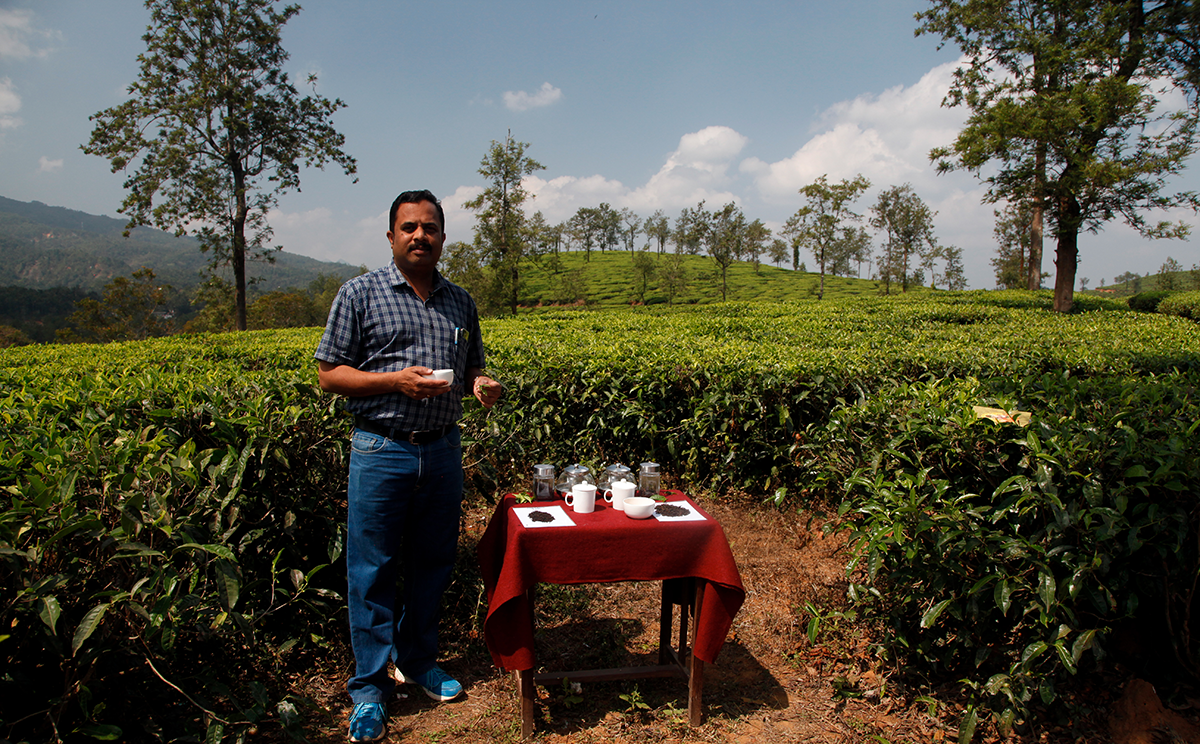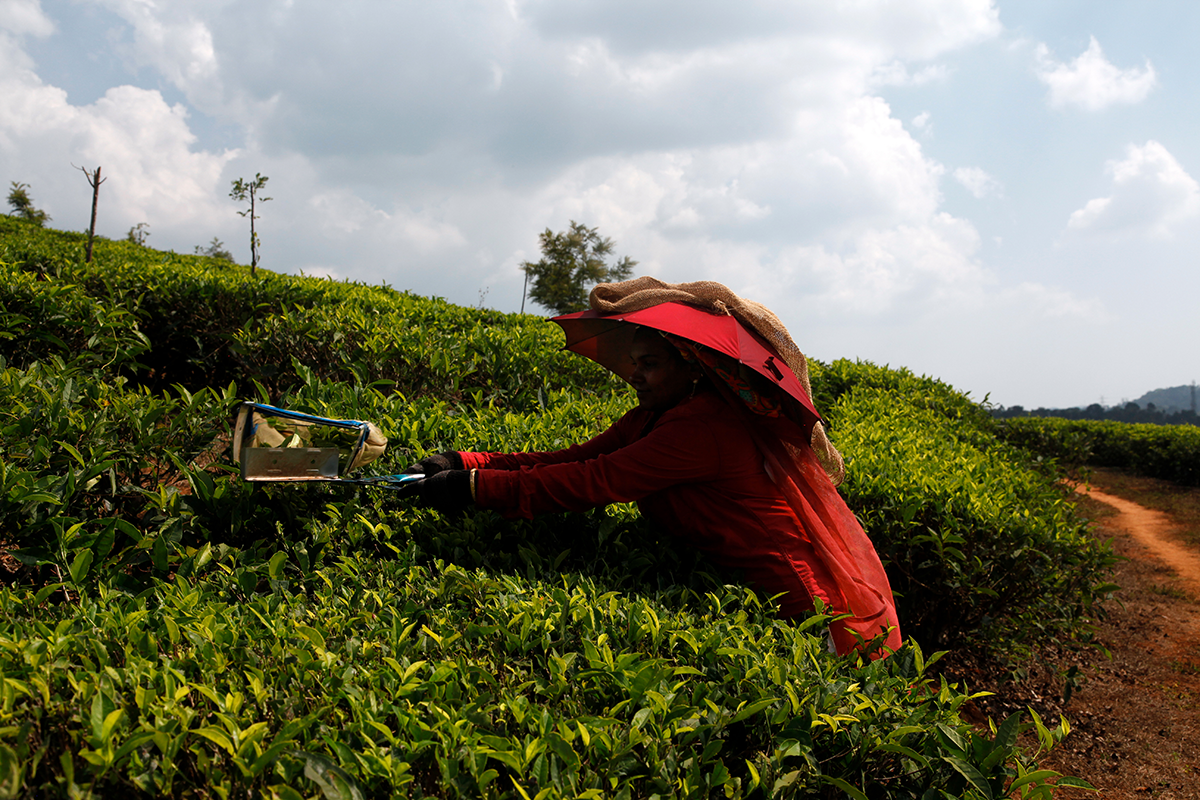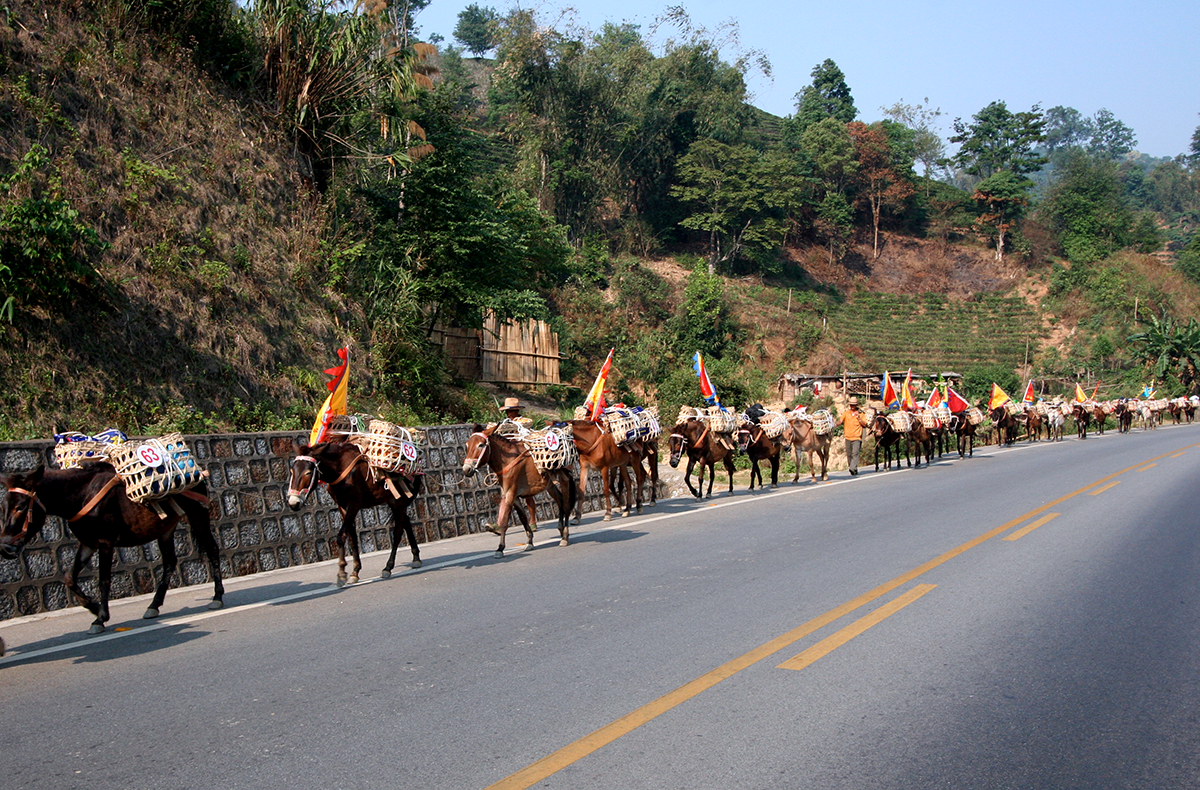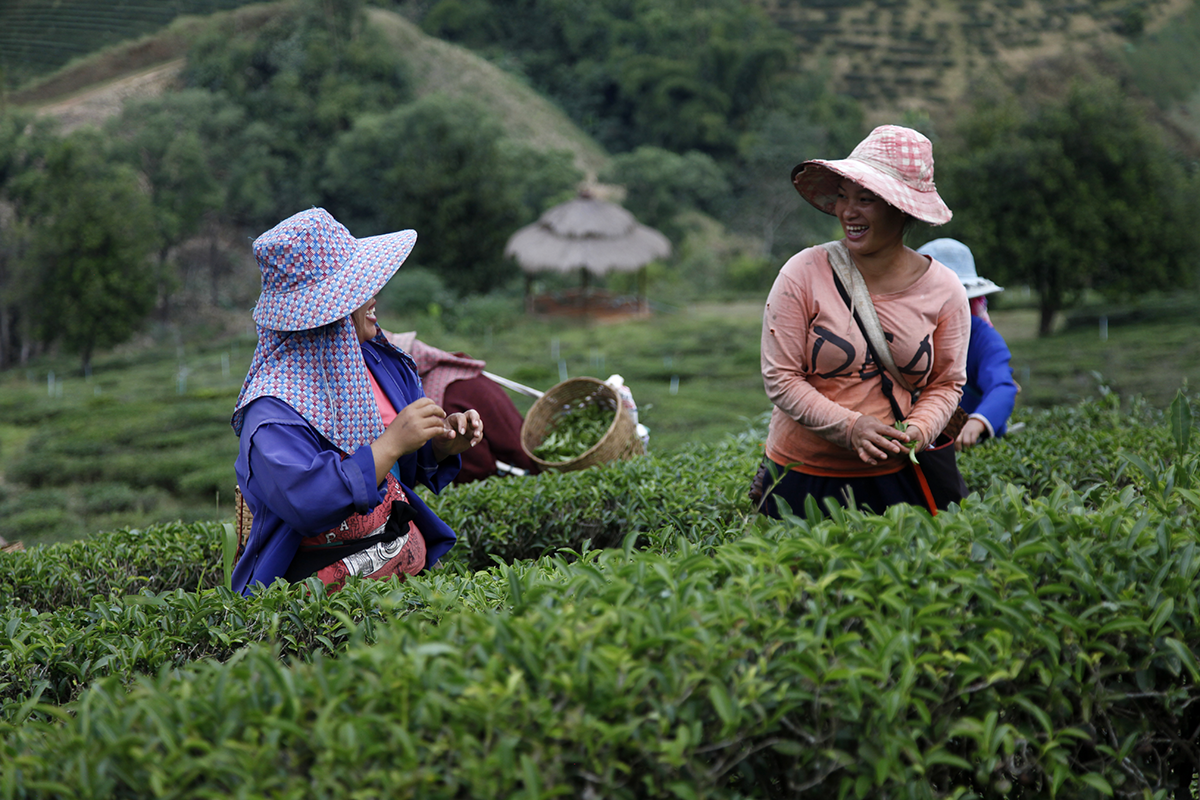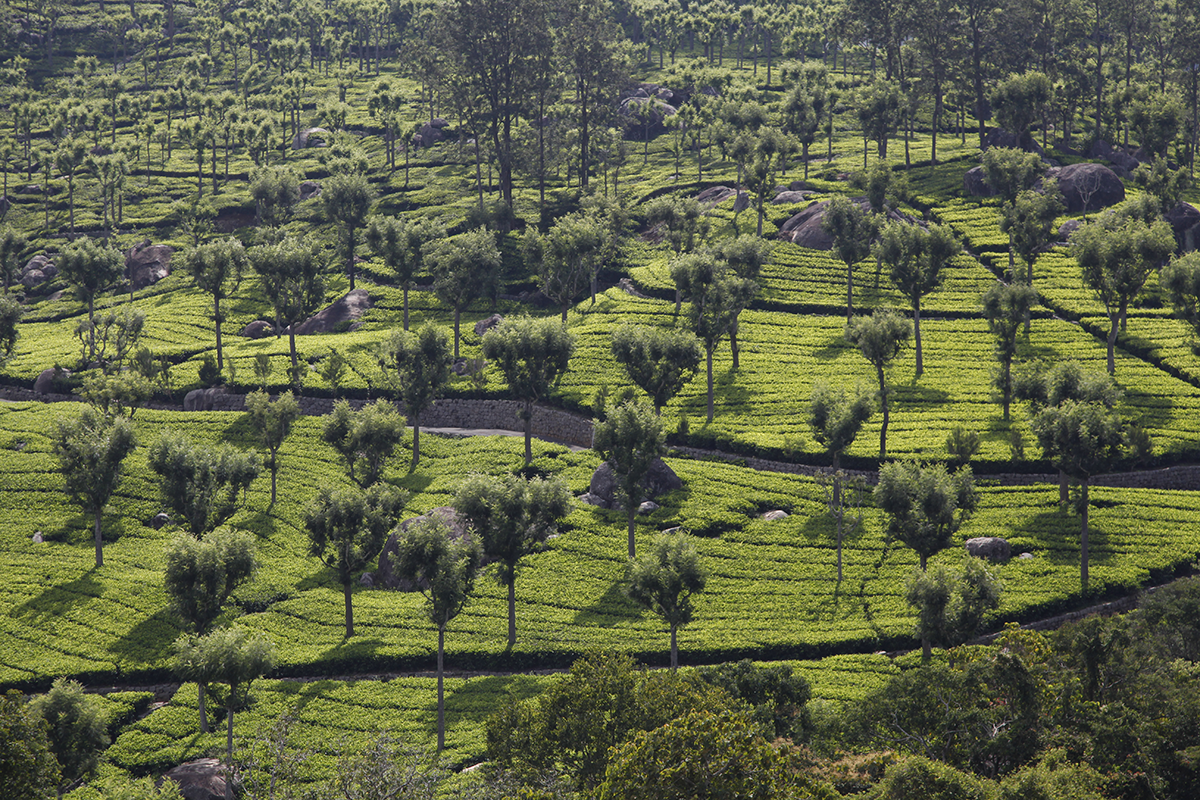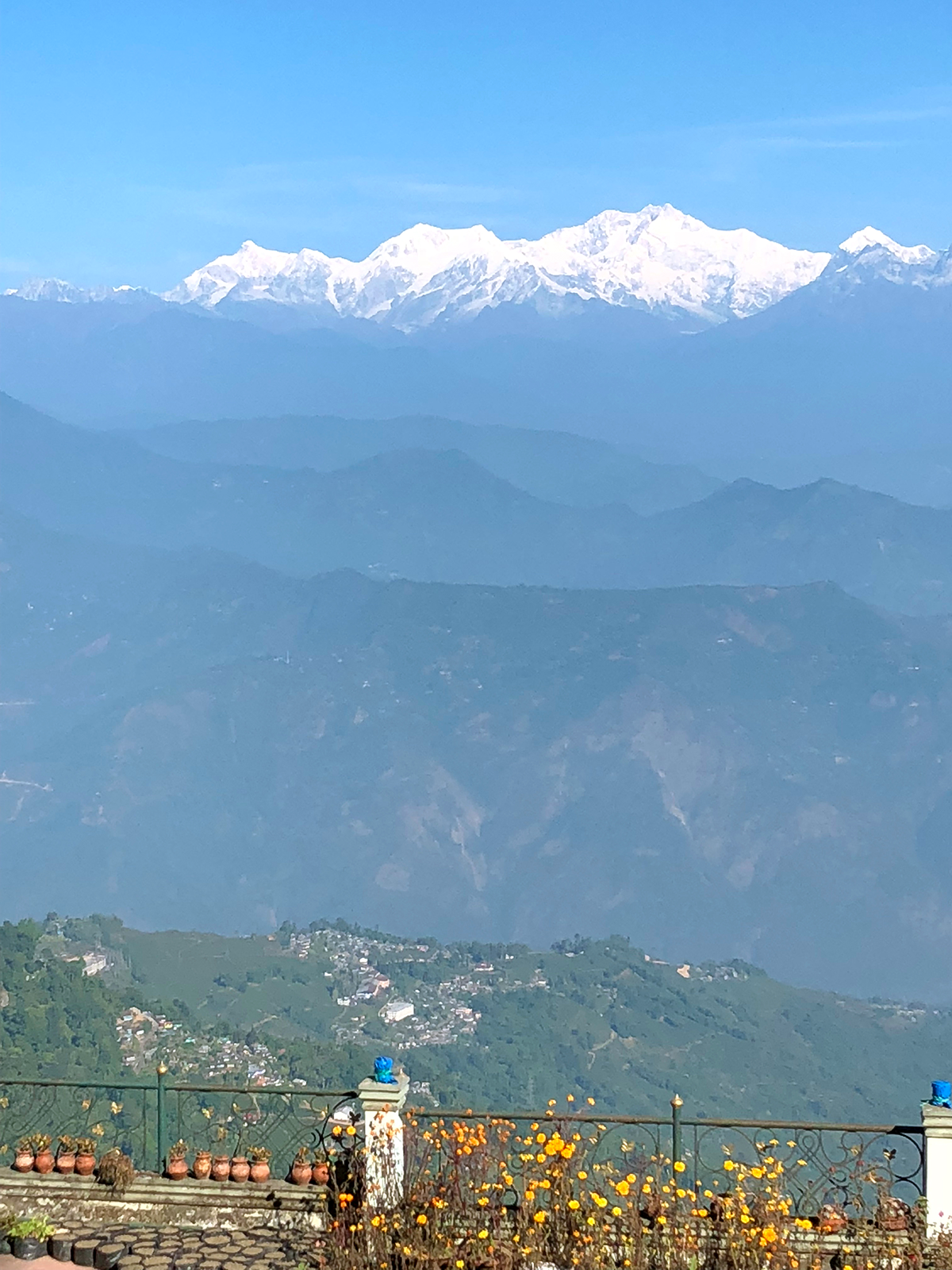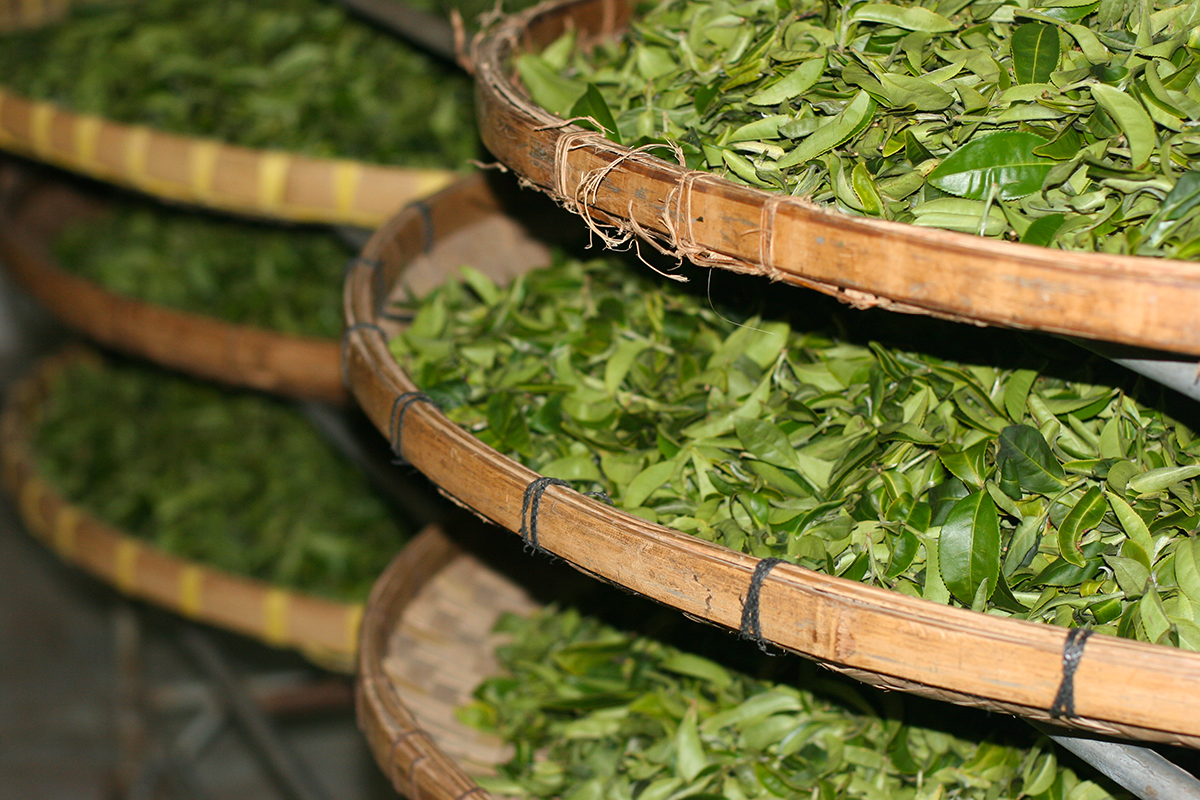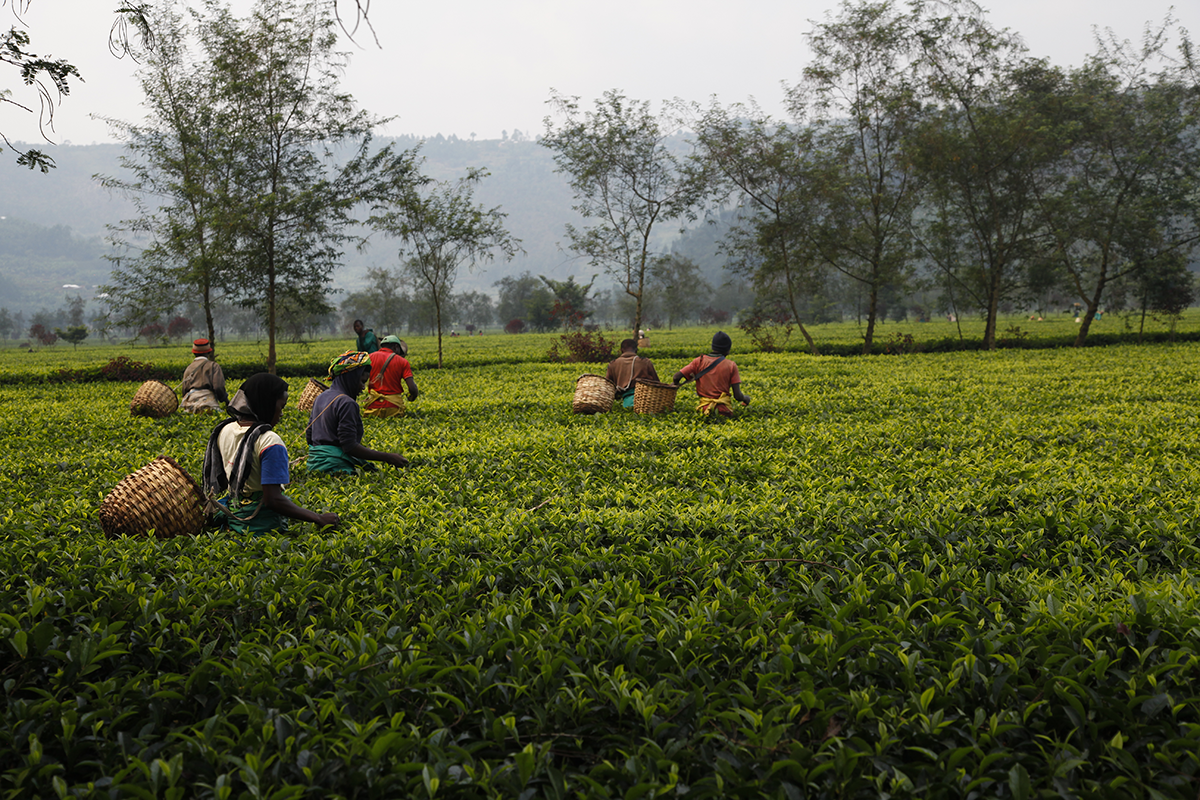You can drink your tea in the kitchen, in the living room or in bed. You can enjoy it on the balcony, in the garden, at your desk, or while admiring a beautiful view. You can also taste your tea on the plantation itself. First, you cover a simple table with a red cloth, to contrast with the green. Next, you place the dry leaves on a white sheet in order to examine them while the liquor reaches the right temperature. Then you savour your tea surrounded by tea plants, the same ones your leaves have come from. Thanks to Vinod Kumar for this wonderful tasting on the Achoor plantation.
From plant to cup
The teas of Kerala
The tea-producing regions of Southern India are mainly located in Tamil Nadu (around Ooty and Coonoor) and Kerala (Munnar and Wayanad). Although the teas from these areas are not known as the best in the country, if you seek out good teas you can find plantations producing some really interesting ones. Like here, in the Wayanad region, with the Western Ghats in the background, and Chembra Peak.
Tea is not always harvested by hand
Harvesting tea using shears poses a problem in terms of quality, as the stems get cut too, instead of just the shoot and the two next leaves. For a high-quality tea, nothing surpasses picking by hand. When, during my travels, I see someone using shears, I talk to the planter to find out why this is. Often, it’s due to a lack of workers. Another common situation is that the tea is picked by hand in the best season, and then shears are used for the lesser-quality harvests, and these leaves will be used for tea bags.
The tea trading centre of Kochi
The city of Kochi (India) is one of the old trading centres that developed thanks to tea. In the case of the capital of the state of Kerala, it was also thanks to spices, coffee and jute. These goods were all packed into the holds of ships that set sail for Arabia. Today, many Indian tea companies maintain a presence in this city, particularly on Willingdon Island. And if you wander along the streets that link the charming district of Fort Kochi to the area of Mattancherry, you will spot the wholesalers’ warehouses, selling whole sacks of tea and coffee, but also cardamom, ginger, pepper, nutmeg and more. It’s an aromatic experience that takes you back in time, surrounded by houses in the Portuguese and Dutch colonial style. The shadow of Vasco da Gama looms everywhere in the old town. Not far from there, tourists enjoy watching the Chinese fishermen rigging up their nets, and weighing them down with heavy stones.
The tea routes
For centuries, tea travelled on the backs of donkeys, horses and yaks. There were a number of tea routes. They started at the Chinese provinces that produced compressed teas (Yunnan, Sichuan, etc.) and led to Tibet. In those days, tea was traded for salt or horses.
To perpetuate this tradition today, some people hold re-enactments, and you can watch hundreds of animals file past, carrying cakes of tea.
The faces behind your favourite teas
When you prepare a cup of tea, you may find yourself wanting to know more about it. What sort of landscape did it grow in? Who are the people that grew and processed it? I hope to answer some of those questions in my blog! For fans of teas from northern Thailand (Milky Oolong, for example), here are the faces of the Mae Salong tea pluckers, hard at work harvesting the leaves.
Changing landscapes
Tea grows in many countries, but the plantations look very different from one region to another. With the gently undulating rows of tea plants, the light covering of trees for protection, and the dark rocks that punctuate the landscape, this view is recognisably southern India. Munnar (Kerala) and Coonoor (Tamil Nadu) produce teas of varying quality. Those that come from around the town of Ooty (Tamil Nadu) are the best.
Looking across the roof of the world
In Darjeeling, tea is cultivated until the end of November, give or take a couple of weeks, depending on the soil temperature. Once the temperature dips below 16°C, the tea plants enter a dormant state until the following spring. November is an ideal month to admire the third highest peak in the world, Kangchenjunga, which rises above the Himalayan foothills.
Time to sweat
Black teas are oxidised; green teas aren’t: that’s the difference. With oolongs, it’s more complicated. They can be oxidised a little, a lot, or zealously. Their oxidation rate can range from 10% to 70%. Of course, a lightly oxidised oolong will have a more vegetal aroma, while a more oxidised oolong will develop woody, fruity notes. Whatever the level of oxidation required, the processing steps are the same: withering, sweating, roasting, rolling, then drying. The sweating stage is essential. It involves alternating periods of stirring the leaves with periods of resting them, as illustrated by this photo. The aim of this stage is to encourage oxidation while removing the natural moisture from the leaves.
Starting from scratch every time
When I’m looking for premium teas, I look at what the farmers and plantations I already know are producing. I also look for new farms, sometimes in new regions, sometimes in new countries. Sourcing premium teas is like starting from scratch every time. When it comes to rare and exceptional teas, there is no guarantee that a reputable producer will be able to make a tea as amazing as the previous year’s. You have to try the teas, blind, so you’re not influenced by the prestige of a name or your goodwill towards a farmer. And sometimes you have to pack your bags and set out on an adventure. Rwanda, for example, can produce some very good teas, and is among the countries I intend to return to soon and explore different plantations.

